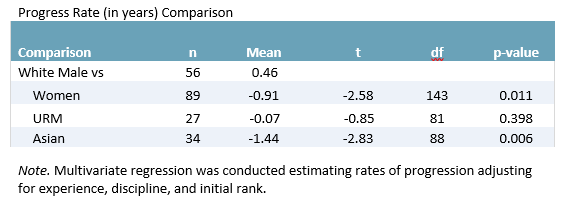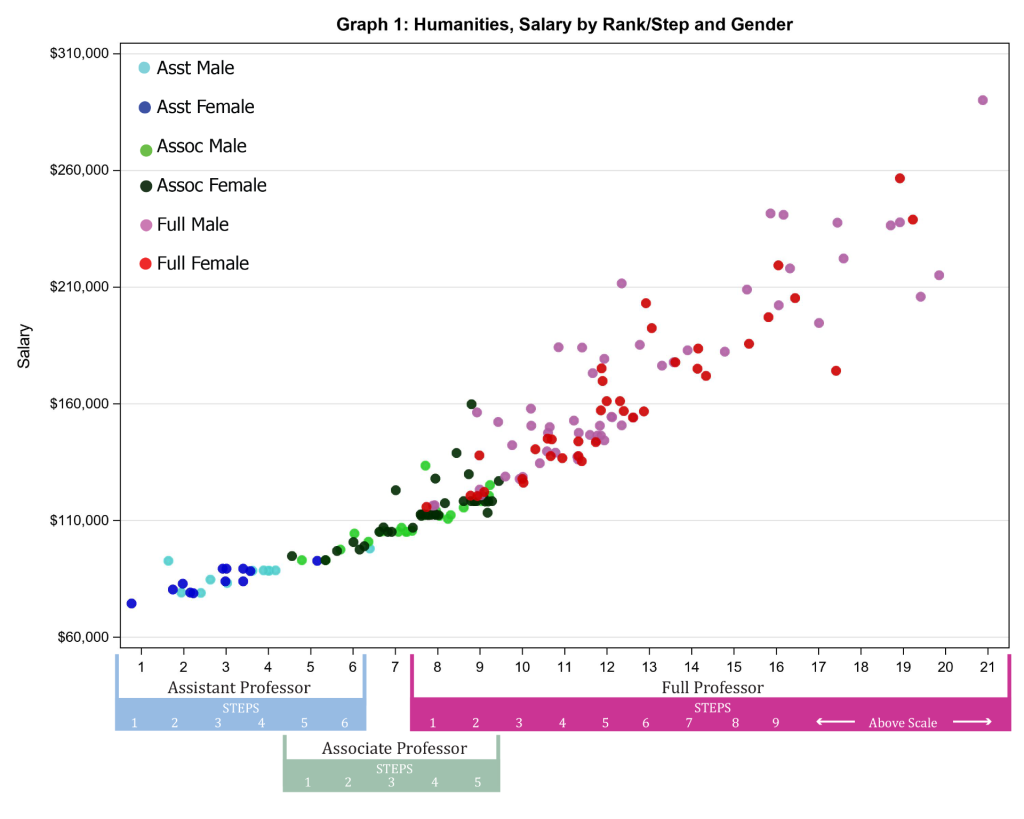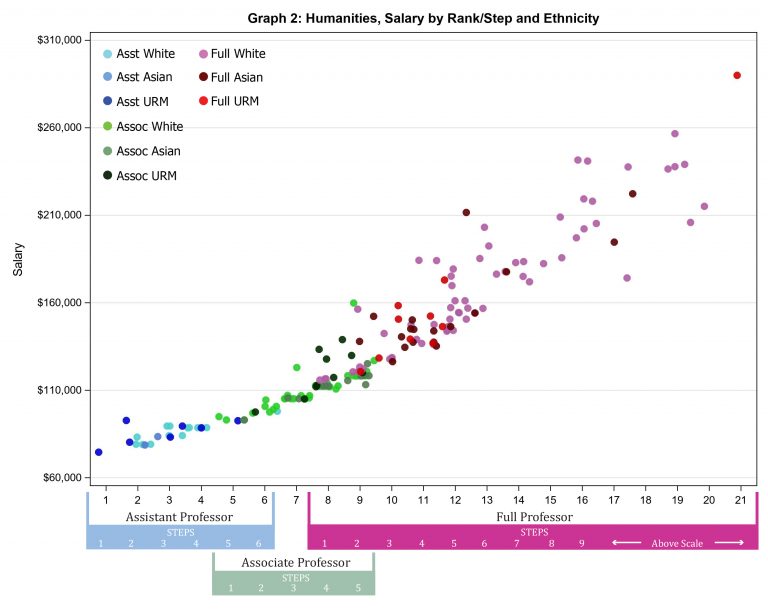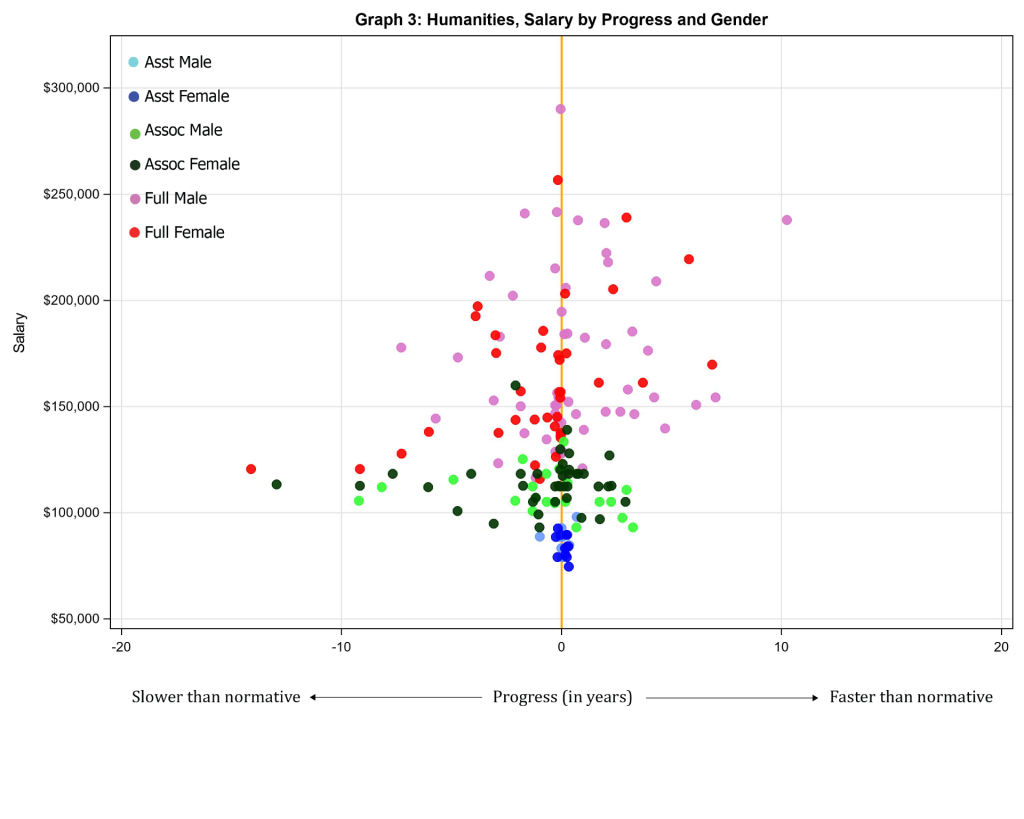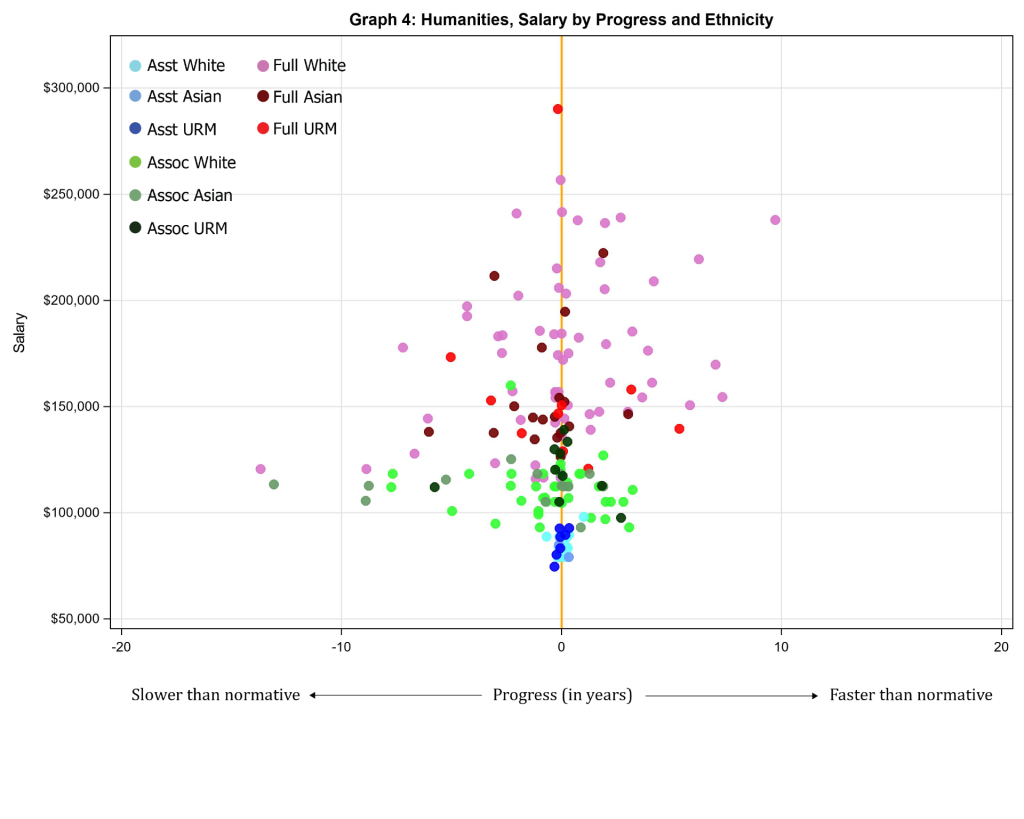Ladder Rank Salary Data
The salary data for all Ladder Rank Faculty in the School of Humanities are plotted below.
Multiple Linear Regression Analysis
When these data are evaluated with the simplest model that includes only demographic variables the result indicate that, compared to their colleagues who are male, women earn salaries that are 12% lower, Asian faculty 1.8% lower, and URM faculty 15.% lower. However, only 6% of the salary variation is explained by the model (Table 1). As additional explanatory variables are added to the model, salary differences diminish to approximately 1% or less between women, Asian, and URM faculty when compared to white men; and the percentage of salary variation explained by the model increases to 91%. This indicates that at the campus level, there is little evidence of salary inequity associated with gender and/or ethnicity.
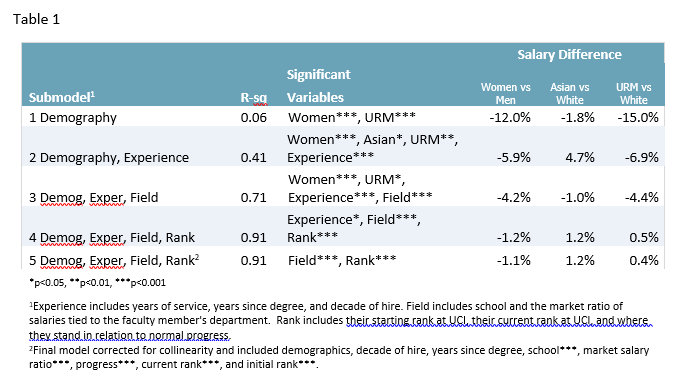
Progression Analysis
The progression data for all General Campus Ladder Rank Faculty, are plotted below. Normative progression is defined in the Progression Matrix.
Progress Rate Analysis
Using a simple t-test, the results indicate that there is no statistically significant difference in progression rate means between URM and white male faculty. However, female faculty progress 1.4 years and Asian faculty 1.9 years more slowly than white males. After using multivariate regression to adjust for experience, discipline, and initial rank, there was no statistically significant difference in rates of progression between White men, and URM or Asian faculty. Women progressed at a significantly slower rate than men (b = -0.93, p = .0457). Normative progression is defined in the Progression Matrix.
